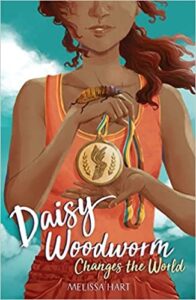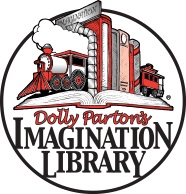 by Melissa Hart
by Melissa Hart
Recently an acquaintance of my daughter let her know he’d been depressed and cutting himself in places on his body where his parents couldn’t see. When his parents learned what was happening, they called me.
“Is there a middle-grade novel about depression and self-harm?” they asked.
“You bet,” I said.
I’m the author of Better with Books: 500 Diverse Books to Ignite Empathy and Encourage Self-Acceptance in Tweens and Teens. I’m here to tell you that these days, there’s a middle-grade and young-adult novel or memoir for almost every issue our kids face. Thank goodness.
I recommended four tween novels to the parents of my daughter’s acquaintance: The Truth as Told by Manson Buttle; Ghost; Lights, Camera, Disaster; and Some Kind of Happiness. The protagonists in these books struggle with depression and anxiety and learns healthy coping techniques that range from competitive track to filmmaking. The books aren’t pedantic and prescriptive; rather, they’re engaging, powerful stories. Kids who read them get to explore frightening emotional states safely through fictional characters. They gain the language to express their own emotions and strategies for coping.
I’m a book pusher. I admit it.
 I buy copies of diverse children’s and young-adult novels and put them in Little Free Libraries around my city. I volunteer to help with Oregon Battle of the Books—a kids’ reading program and competition. I recommend books constantly, especially to young people who long for stories that represent them as members of the BIPOC and LGBTQIA+ and disabled communities.
I buy copies of diverse children’s and young-adult novels and put them in Little Free Libraries around my city. I volunteer to help with Oregon Battle of the Books—a kids’ reading program and competition. I recommend books constantly, especially to young people who long for stories that represent them as members of the BIPOC and LGBTQIA+ and disabled communities.
I can’t help myself. I truly believe books change our lives for the better.
Still skeptical? Cognitive neuropsychologists at the University of Sussex found that reading reduces stress levels by almost 70 percent. Participants in the study demonstrated reduced muscle tension and slower heart rate after six minutes of silent reading. It doesn’t even matter what you read, researchers tell us—just slowing down and immersing ourselves in words is enough.
Knowing our children and young adults suffer from increased anxiety and depression and knowing reading fiction and memoir correlates with increased compassion for self and others, besides being a damned good escape, I want to suggest five ways of getting books into the hands of young people.
1. Little Free Libraries.
 I built one for my front yard, and then my husband and I built two to donate to friends in other parts of our city. On bike rides and dog walks, I carry an extra novel or two to place in a Little Free Library along my path. PFLAG’s Read with Love program makes it easy to select and purchase books. Want to build a Little Free Library of your own? The official organization has wonderful resources to share!
I built one for my front yard, and then my husband and I built two to donate to friends in other parts of our city. On bike rides and dog walks, I carry an extra novel or two to place in a Little Free Library along my path. PFLAG’s Read with Love program makes it easy to select and purchase books. Want to build a Little Free Library of your own? The official organization has wonderful resources to share!
2. Donate to Schools.
In a country where teachers often spend their own money for pencils and papers, there’s precious left over for books. Check out an amazing list of titles from the organization We Need Diverse Books. Visit your local thrift stores and book stores for copies, or heck, buy books new. Authors will thank you, and teachers will be thrilled when you show up at the school office with a box of thoughtfully chosen titles for children and teens.
3. Support Your Local Library.
Become a “friend of the library” with an annual donation, volunteer at library book sales or in the stacks, recommend authors and teachers to librarians for possible workshops and readings, and log onto your library’s website to suggest diverse titles. Most of all, get to know your children’s and teens’ librarians and ask what books are exciting them right now.
4. Introduce a Kid to Imagination Library.
 Dolly Parton‘s Imagination Library mails one book a month to children between birth and five years for free! Help a family sign up today!
Dolly Parton‘s Imagination Library mails one book a month to children between birth and five years for free! Help a family sign up today!
5. Volunteer with a Book Battle.
The year my middle-grade novel Avenging the Owl was an Oregon Battle of the Books selection, I volunteered to launch and coach a team at my daughter’s school. It turned out to be great fun! Teams of four read and reread sixteen books total, then meet for related trivia contests regionally and statewide. Many states have book battles—Alaska, New Hampshire, and Tennessee, to name a few. And there’s America Battle for the Books, as well.
There are just so many ways to get books into the hands of the kids who need them the most. Every week I field emails like this one:
“I need a young-adult book about a kid living in foster care who desperately wants to go to college.”
I recommended A Chance in the World: An Orphan Boy, A Mysterious Past, and How He Found a Place Called Home by Steve Pemberton, and Jennifer Longo’s exquisite young-adult novel, What I Carry.
“I need a novel about a warm-hearted girl struggling with impulse control and alienating her classmates because of ADHD,” another parent asked.
No problem. Debbie Reed Fischer wrote just that protagonist in the middle-grade novel This is Not the Abby Show.
If you have a kid who struggles (and who doesn’t?) with peer pressure or parental divorce, anxiety about grades or anxiety about body image, friendship questions or questions about gender and sexuality—children’s and young adult authors have penned related rich and vibrant stories. Really, this is a wonderful time for young readers; there’s a book for almost everyone.
My daughter has lately decided that she’d rather hang out in our backyard with her tadpole aquarium and our flock of chickens than work on her math homework. On a whim, I Googled “middle-grade novel” and “chickens.” No way did I think I’d find a book for my kid’s hen obsession. But lo and behold, I discovered one—Kelly Jones‘s Unusual Chickens for the Exceptional Poultry Farmer. Whether it inspires my daughter to complete her math homework remains to be seen. I’m happy she gets to see herself and her experiences affirmed in a story.
Melissa Hart is the author, most recently, of the middle-grade novel Daisy Woodworm Changes the World.
